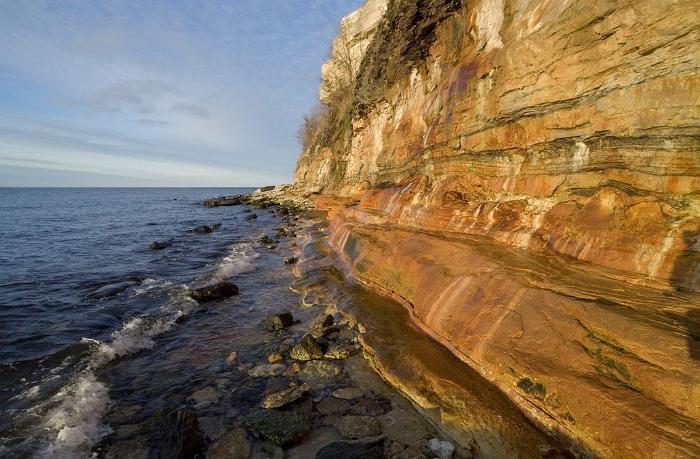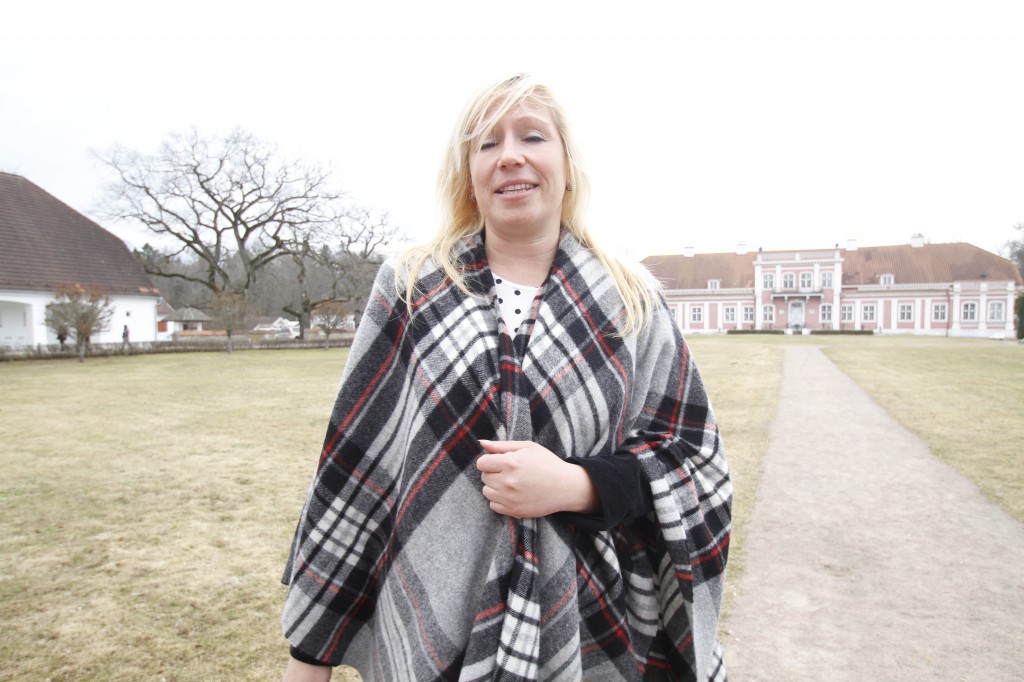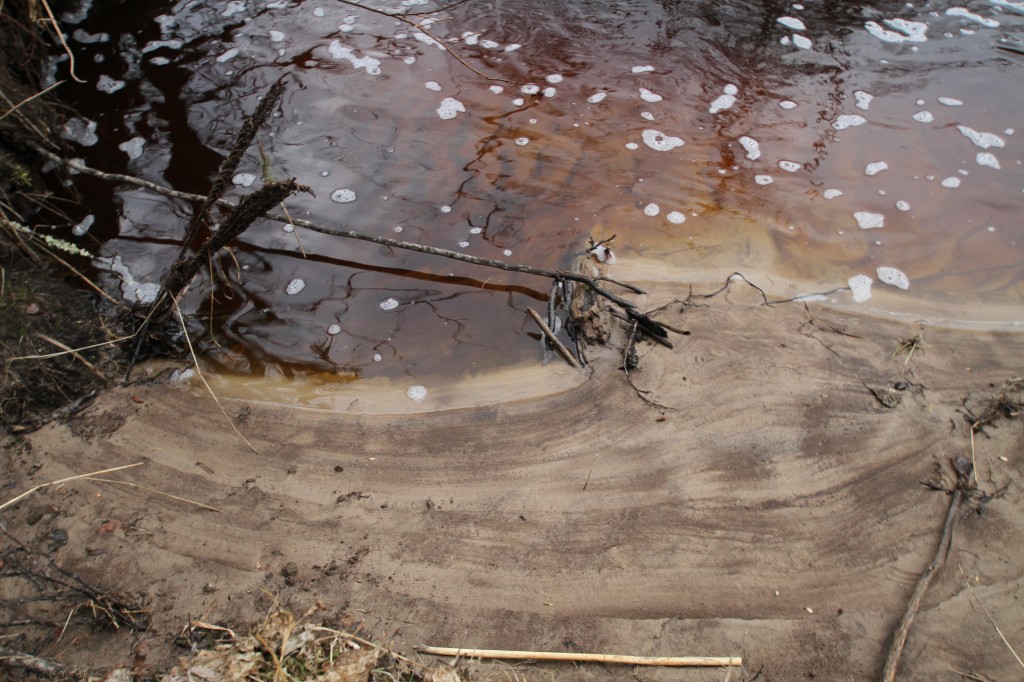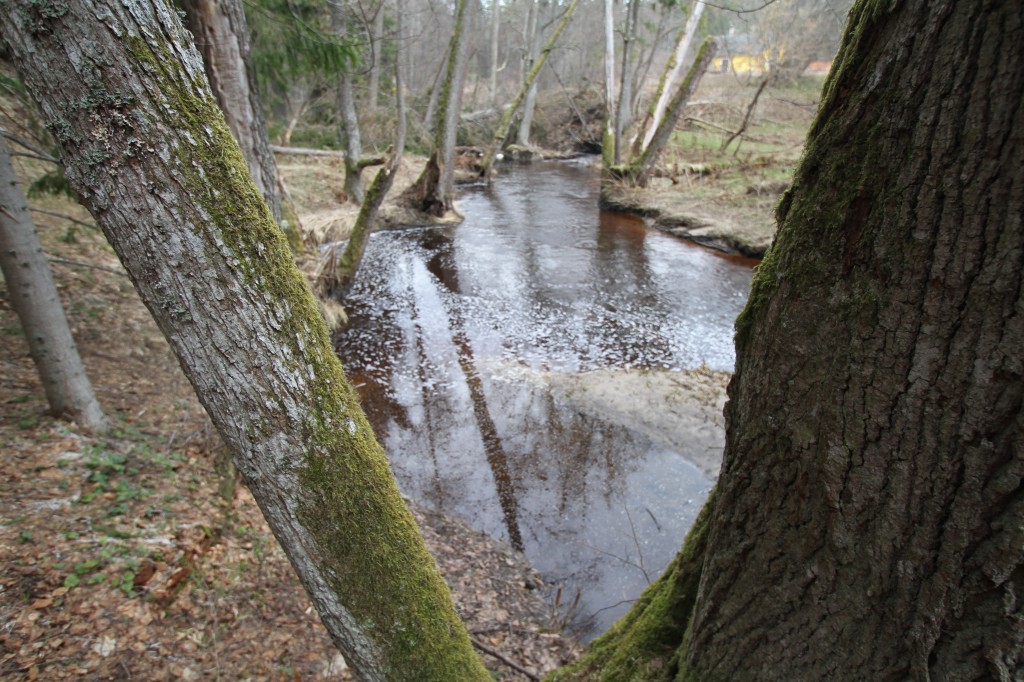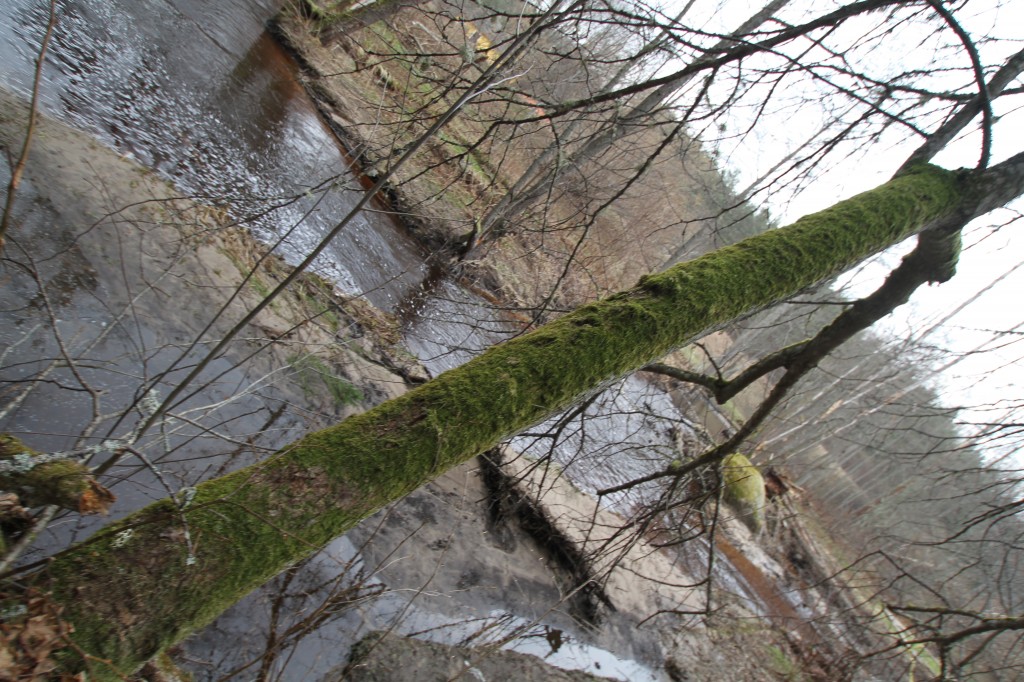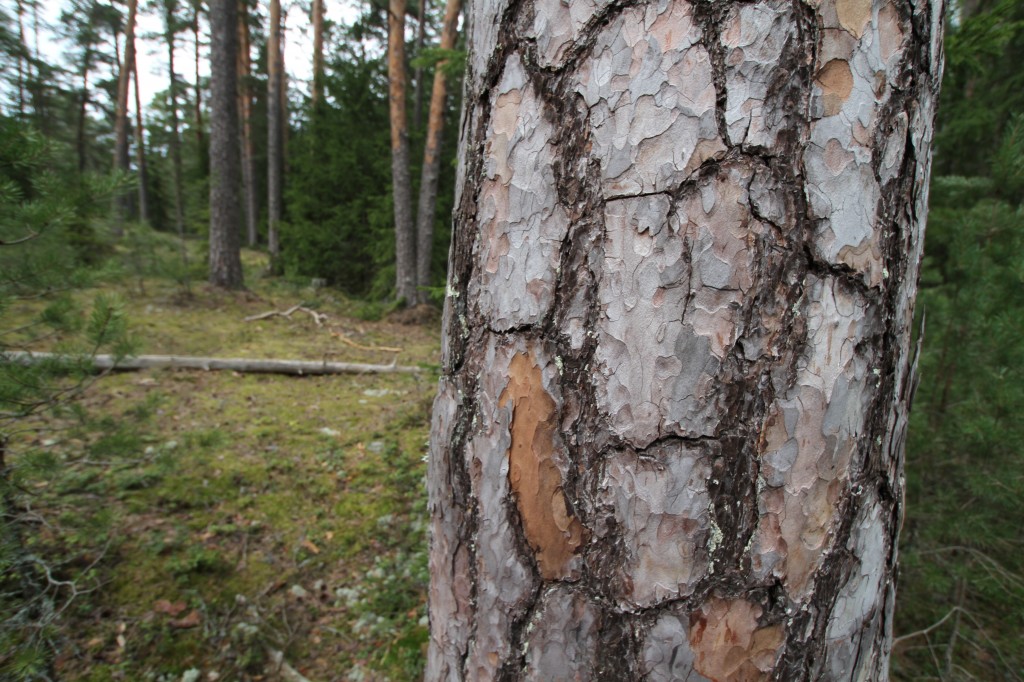Avid travelers have likely heard of Tallinn, Estonia’s major city, since it is increasingly becoming a more frequented travel destination in Eastern Europe. Finns are known for coming over to Tallinn for long weekends or short vacations as are Russians and other Europeans from nearby countries. It is likely if you’re heading there on a whirlwind tour, you may not have time to take in some of Estonia’s countryside, but there are many attractions within an hour or two drive that are worth exploring. You can either stay at one of the hotels in the more rural areas, or use Tallinn as your base and do day trips. Two standouts include Paldiski and Lahemaa National Park.
As we head out of town, we hear more about Estonia’s Juniper forests. They seem to everywhere, as prevalent as the mushrooms grow in and around them. Since the air is cold and pure, there is also a lot of limestone through Estonia. Marco talks about his interest in nature and bird watching and explains how he left his old job to set up an adventure tour company, primarily focused on kayaking. As he speaks, I can hear the passion in his voice as he moves onto animals and the environment.
Both day trips are unique, the magic in a trip to Paldiski lies in the fishing village and seaside atmosphere whereas the national park, the magic is clearly the trees and nature walks.
Paldiski: Roughly 45 kilometers or so from Tallinn is Paldiski, a coast town which as noted above, was also a location restricted to visit during Soviet times because of its submarine and rocket base on site. Today, there is crumbling barracks, but it also touts rare limestone cliffs (gorgeous) and wildlife, which you’ll likely see if you have more time to spend to hike around the area.
In the 18th century, Paldiski became a Russian naval base and the Russians renamed it as Балтийский Порт (“Baltiyskiy Port”, a “Baltic Port”). The Estonian pronunciation, Paldiski, became the town’s official name in 1933. Apparently after the Red Army left in 1944, much of it fell into ruin I was told but in 1962, the town became a Soviet Navy nuclear submarine training centre. With two land-based nuclear reactors and employing some 16,000 people, it was the largest such facility in the Soviet Union. Because of its importance, the whole city was closed off with barbed wire until the last Russian warship left in August 1994.
While it is clearly open to tourists and locals alike today, there’s still a sense of abandonment to the area twenty years later. The peninsula is covered in abandoned bunkers, piles of unidentifiable junk and various military debris. If you’re into history, it’s definitely worth a stop and remember that the views over the cliffs are worth the trip alone. The Pakri peninsula has Estonia’s highest lighthouse and is also home to rare black guillemots, which look like little penguins, which I’d love to see with more time on a future trip.
Lahemaa National Park will easily take you an entire day. Situated along Estonia’s northern coast, you can get here in about an hour’s drive from Tallinn. It was cold the day we ventured north, but it didn’t detract from its serene and natural beauty. Apparently locals head north for berry and mushroom picking, a popular past time it appears. If you plan to stay in the region for awhile, you should read up on mushrooms because they’re sought after and relished here.
Says our guide Marco, who introduced himself starting with his age (36 years old in case you’re curious), “Lahemaa National Park plays a significant role in Estonian culture. The park is here to preserve nature and our cultural traditions. During Soviet Times, we didn’t expect anything from nature…..we must preserve nature and our environment. After Estonia’s commitment following the departure of the Soviets, Latvia and Lithuania followed our direction.”
“In the forests here,” he says, “there are wild boars (no wonder they’re on so many restaurant menus I thought to myself), foxes and elk. Over 50% of Estonia is a forest.” We are shown to a ‘holy lake’ in the park, which is used for ice fishing in the winter. We walk down a narrow road, past a secondary school and into Juniper land. There are pine and birch trees everywhere and patches of snow still lay scattered on the edges of the road. A woman walks her husky dog with thick grayish black fur and a bright red collar. She doesn’t smile as we pass, but she nods.
After looking at gravestones and hiking along a short trail, we spent a chunk of time at the Sagadi manor where we had lunch (see our write up on Sagadi and the exquisite meal in the Estonian Food Section).
Be sure to take in the Palmse and Vihula manor houses as well as the ancient fishing village of Altja, the Captain’s village of Kasmu and Viinistu, site of the nation’s largest art collection. I’m an art lover so if you have any emotional connection to art, add that to your list…..Eastern European art offers some of the most dramatic and darkest paintings I’ve ever seen. Four hang on my wall at home from Hungary, Russia, the Czech Republic and Poland. I’d love to see an Estonian and Ukranian artist join the collection sometime in the next few years.
Art isn’t the primary reason you should head to the park however…..nature is. Below are some shots I took during a short 1 km walk along the Beaver Trail, which includes the valley of one of the most beautiful North Estonian rivers, the Altja River, beaver dams and burrows.
While you may not be able to see it in detail here, along the trail, we found a significant amount of Iceland Moss, which is a lichen whose erect or ascending foliaceous habit gives it something of the appearance of a moss. Lighter than the moss I grew up with in the Adirondacks, its a very light sage color, almost a blend between light safe and a pale chestnut color. Marco picks up some in his hand and tells us about its bitter taste and healing properties. It apparently forms a nutritious and easily digested amylaceous food, and can be used in place of starch but he tells me that it is used to make tea if you need to quiet down an unsettled stomach. I thought to myself: where was this moss when I was heaving anything and everything from food poisoning in Southeast Asia many years ago?
Other trails worth taking in if you have more time include the 4.7 km Oandu Old-Growth Forest Nature Trail, which is partly boardwalk. There’s also a 7 km walk called the Majakivi Nature Trail which runs along the Juminda Peninsula. Majakivi (HouseRock) is the third largest erratic boulder in Estonia, 7 meters in height. There is a watch tower on Pikanomme Dune and along the way, you’ll walk through woods, dunes, and a small bog.
Shorter ones ranging from 3 to 4.5 kilometers include the Viru Bog Nature Trail (loaded with bog plants and bog pools), the Altja Nature and Culture Trail (passing a fishing village and rives along the way) and the Kasmu Nature and Culture Trail (includes the captain’s village and a stone field).
There’s an amusing sign that reads: Picking berries and mushrooms is permitted but any other ECONOMIC ACTIVITY is FORBIDDEN! Apparently fishing is also allowed but only in limited areas, so you’d have to refer to what they call the “special management zone” to learn about the restrictions.
Additional Suggestions for Day Trips include:
- Viimsi Church: a great option for architecture or church lovers. St. Jacob’s Church in Viimsi boast modern architecture which blends in well against the seashore landscape. It is apparently the only Lutheran church built in Estonia after World War II.
- Viimsi Open Air Museum: there’s a fun restaurant you should try out here called Restaurant Paat (www.paat.ee), which is an odd upside down boat shaped structure that has a view of hte water.
- Jussi Olletuba: otherwise known as Juss’s beer room lies on the border of Tallinn city and Viimsi municipality. This tavern has an open fireplace and a summer beer garden, better to go when the temperatures are warmer so you can sit outside.
- Aegna, Naissaar and Prangli Islands: you can ferry your way over to any of these islands just off the coast of Tallinn. Aegna and Naissaar have military histories back to the Tsarist Russian era, all part of a tightly-controlled border zone. While they were restricted during Soviet times, today that are open areas for people to visit and take in nearby pine forests and beaches.
- Suurupi Lighthouse: Located in Northern Estonia, this is one of 14 lighthouses in the area. The most distinctive one is the Suurupi Lower Lighthouse, a wooden tower which is the oldest in Estonia and also belongs to the UNESCO World Heritage List, like so many other interesting attractions in Estonia and nearby Lithuania.
Note: My trip was hosted by the Estonia Tourism Board but all opinions expressed here are my own.

Renee Blodgett is the founder of We Blog the World. The site combines the magic of an online culture and travel magazine with a global blog network and has contributors from every continent in the world. Having lived in 10 countries and explored over 90, she is an avid traveler, and a lover, observer and participant in cultural diversity. She is also the founder of the Magdalene Collection, a jewelry line dedicated to women’s unsung voices and stories, and the award-winning author of the bestselling book Magdalene’s Journey
She is founder of Blue Soul Media and co-founder of Blue Soul Earth as well as the producer and host of the award-winning Blue Soul CHATS podcast, that bridges science, technology and spirituality. Renee also founded Magic Sauce Media, a new media services consultancy focused on viral marketing, social media, branding, events and PR. For over 20 years, she has helped companies from 12 countries get traction in the market. Known for her global and organic approach to product and corporate launches, Renee practices what she pitches and as an active user of social media, she helps clients navigate digital waters from around the world. Renee has been blogging for over 16 years and regularly writes on her personal blog Down the Avenue, Huffington Post, BlogHer, We Blog the World and other sites. She was ranked #12 Social Media Influencer by Forbes Magazine and is listed as a new media influencer and game changer on various sites and books on the new media revolution. In 2013, she was listed as the 6th most influential woman in social media by Forbes Magazine on a Top 20 List.
Her passion for art, storytelling and photography led to the launch of Magic Sauce Photography, which is a visual extension of her writing, the result of which has led to producing six photo books: Galapagos Islands, London, South Africa, Rome, Urbanization and Ecuador.
Renee is also the co-founder of Traveling Geeks, an initiative that brings entrepreneurs, thought leaders, bloggers, creators, curators and influencers to other countries to share and learn from peers, governments, corporations, and the general public in order to educate, share, evaluate, and promote innovative technologies.

